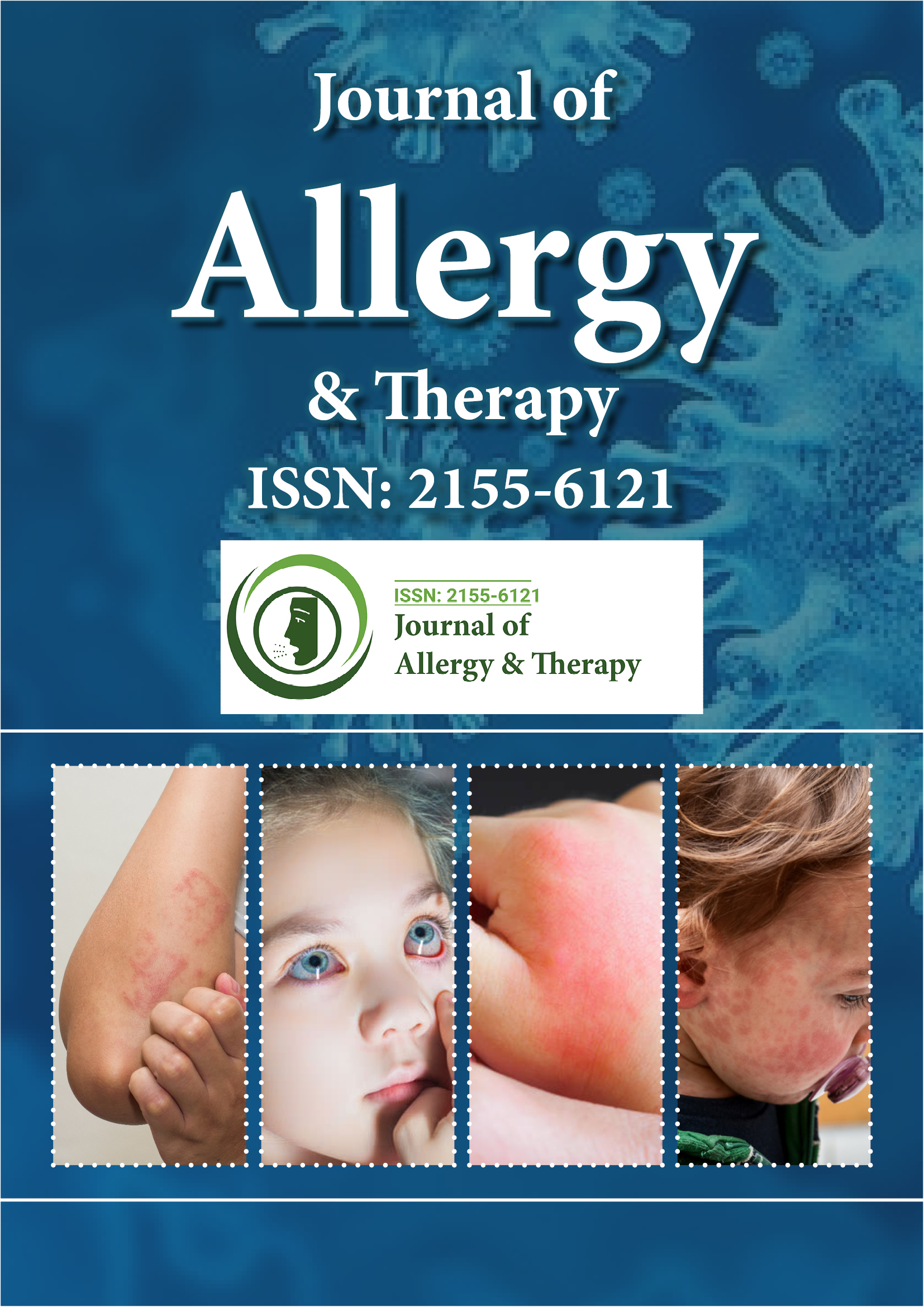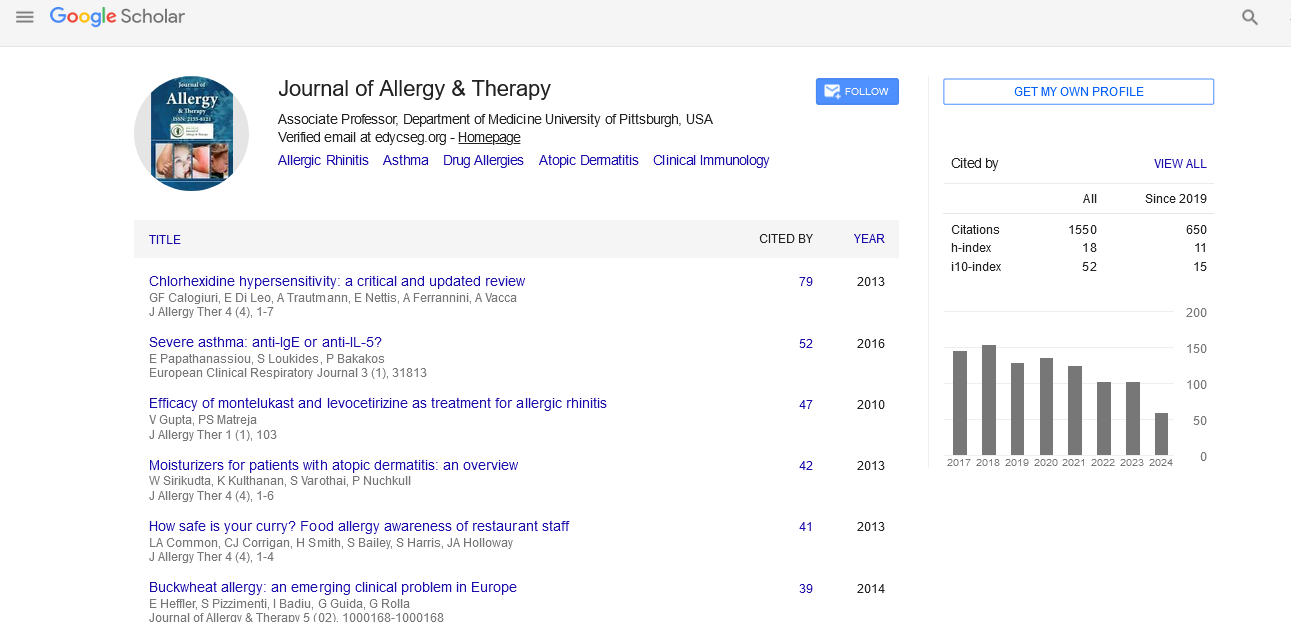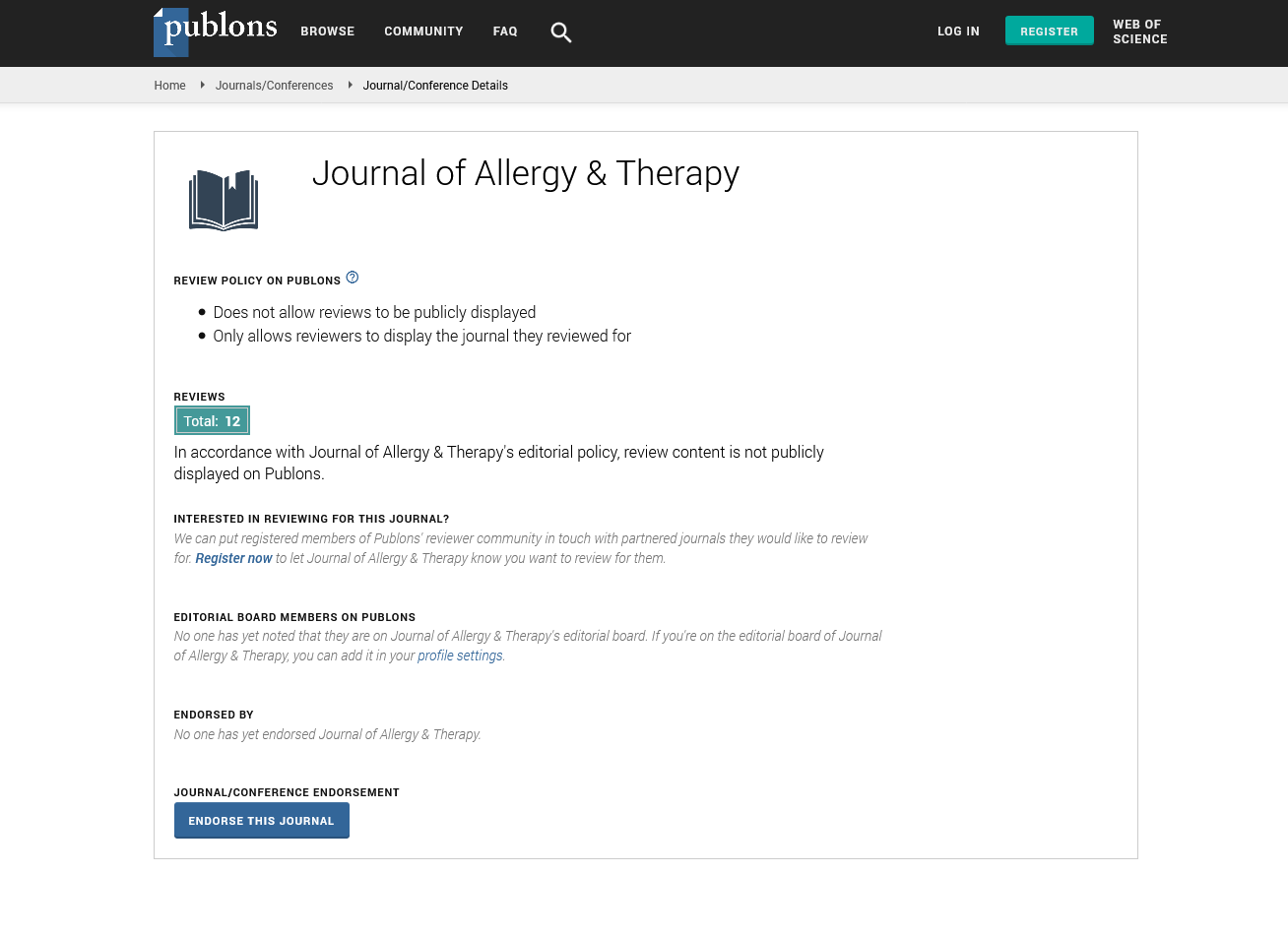Indexed In
- Academic Journals Database
- Open J Gate
- Genamics JournalSeek
- Academic Keys
- JournalTOCs
- China National Knowledge Infrastructure (CNKI)
- Ulrich's Periodicals Directory
- Electronic Journals Library
- RefSeek
- Hamdard University
- EBSCO A-Z
- OCLC- WorldCat
- SWB online catalog
- Virtual Library of Biology (vifabio)
- Publons
- Geneva Foundation for Medical Education and Research
- Euro Pub
- Google Scholar
Useful Links
Share This Page
Journal Flyer

Open Access Journals
- Agri and Aquaculture
- Biochemistry
- Bioinformatics & Systems Biology
- Business & Management
- Chemistry
- Clinical Sciences
- Engineering
- Food & Nutrition
- General Science
- Genetics & Molecular Biology
- Immunology & Microbiology
- Medical Sciences
- Neuroscience & Psychology
- Nursing & Health Care
- Pharmaceutical Sciences
Opinion Article - (2025) Volume 16, Issue 1
Recent Advances in Oral Immunotherapy for IgE-Mediated Food Allergies: A Critical Analysis of Treatment Outcomes
Hiroshi Okada*Received: 31-Jan-2025, Manuscript No. JAT-25-27995; Editor assigned: 03-Feb-2025, Pre QC No. JAT-25-27995; Reviewed: 17-Feb-2025, QC No. JAT-25-27995; Revised: 24-Feb-2025, Manuscript No. JAT-25-27995; Published: 03-Mar-2025, DOI: 10.35248/2155-6121.25.16.410
Description
Immunoglobulin E (IgE)-mediated food allergies are a growing public health concern, particularly in children, where they can lead to severe allergic reactions and a significant reduction in quality of life. Traditional management strategies focus on allergen avoidance and the use of emergency medications like epinephrine; however, these approaches do not address the root cause of the allergy. Oral Immunotherapy (OIT) has emerged as a promising treatment option, aiming to desensitize patients to specific food allergens by gradually administering small, controlled amounts of the allergen. Over the past decade, significant advances in OIT have made, with multiple studies demonstrating its potential to induce clinical tolerance and reduce the severity of allergic reactions. Recent clinical trials have shown that OIT can effectively increase the threshold for allergic reactions to common food allergens, such as peanuts, milk and eggs. However, despite these advancements, OIT remains a subject of ongoing debate due to concerns about its safety, efficacy and long-term outcomes. Adverse reactions, treatment adherence, and the risk of desensitization loss are key challenges that need to address. This analysis critically reviews the latest evidence on OIT for IgE-mediated food allergies, evaluating treatment outcomes, potential benefits, limitations and the future direction of this therapeutic approach.
The food allergy management has undergone significant transformation with the emergence of OIT as a promising therapeutic intervention. This commentary examines recent developments in OIT protocols and their implications for clinical practice. The focus centers on IgE-mediated food allergies, particularly peanut, tree nut, and milk allergies, which constitute a substantial burden on public health systems globally. The fundamental principle underlying OIT involves the gradual introduction of allergenic proteins under medical supervision to induce immunological tolerance. Recent clinical trials have demonstrated success rates ranging from 60% to 85% in achieving sustained unresponsiveness to target allergens. The standardization of protocols has improved significantly, with defined dose escalation schedules and maintenance phases becoming uniform across treatment centers. Understanding the cellular and molecular mechanisms driving successful OIT remains crucial. Recent studies have elucidated the role of regulatory T cells (Tregs) in mediating tolerance induction. The upregulation of Interleukin-10 (IL-10) and Transforming Growth Factor-Beta (TGF-β) production, coupled with modifications in dendritic cell function, appears central to achieving sustained desensitization. Furthermore, alterations in the gut microbiome during OIT have emerged as potential contributors to treatment success.
The identification of reliable biomarkers predicting OIT outcomes represents a significant advancement. Baseline levels of specific IgE, IgG4, and the ratio between these antibodies have shown promise in stratifying patient populations. Additionally, recent research has highlighted the potential of basophil activation testing and epitope mapping in predicting treatment responses. Despite encouraging efficacy data, safety concerns persist in OIT implementation. Adverse reactions occur in 15-20% of patients during dose escalation phases, with most being mild to moderate in severity. Eosinophilic esophagitis has been reported as a potential complication in approximately 2-3% of cases. These safety considerations necessitate careful patient selection and monitoring protocols. Recent modifications to traditional OIT protocols have focused on enhancing safety and efficacy. The incorporation of adjuvant therapies, such as omalizumab, has shown promise in accelerating desensitization while reducing adverse events. Modified maintenance dosing schedules, including extended intervals between doses, have demonstrated improved adherence without compromising efficacy. The assessment of quality of life outcomes has become increasingly important in evaluating OIT success. Validated instruments measuring food allergy-related quality of life have shown significant improvements following successful desensitization.
Conclusion
These benefits extend beyond direct clinical outcomes to include reduced anxiety and increased social participation among treated individuals. Economic evaluations of OIT programs have begun to emerge, providing crucial data for healthcare systems and insurance providers. While initial costs remain substantial, long-term analysis suggests potential cost savings through reduced emergency department visits and improved productivity. These findings support the broader implementation of OIT programs in specialized allergy centers. The evolution of OIT continues with several promising developments on the horizon. Novel delivery systems, including modified protein formulations and microencapsulation technologies, may enhance safety and efficacy. Additionally, the integration of biological therapies and personalized medicine approaches based on genetic and immunological profiles shows potential for optimizing treatment outcomes.
Citation: Okada H (2025) Recent Advances in Oral Immunotherapy for Immunoglobulin E-Mediated Food Allergies: A Critical Analysis of Treatment Outcomes. J Allergy Ther. 16:410.
Copyright: © 2025 Okada H. This is an open-access article distributed under the terms of the Creative Commons Attribution License, which permits unrestricted use, distribution, and reproduction in any medium, provided the original author and source are credited.


